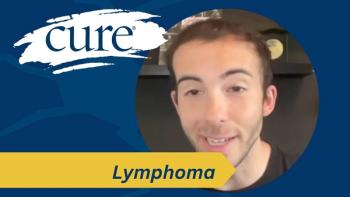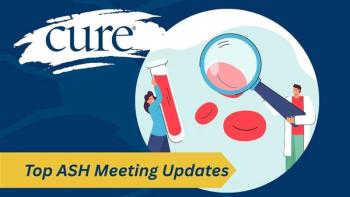
ASH 2020: Updated Results from the Murano Five-Year Analysis in R/R CLL
FOR YOUR REFERENCE: What Are Clinical Trials?
Clinical trials determine whether a drug works in humans and whether it is safe and effective. For a drug to be approved for use, the Food and Drug Administration (FDA) requires four phases of a clinical trial. The number of participants increases in each phase, starting from 20 to 80 people for a phase 1 trial to up to several thousand for a phase 3 trial (Figure 1).1
- Phase 1: tests an experimental treatment on a small group of often healthy people to judge the drug’s safety and side effects and find the correct dosage.
- Phase 2: focuses on effectiveness and obtains preliminary data on whether the drug works in people who have a certain disease or condition.
- Phase 3: gathers more information about safety and effectiveness, studies different populations and dosages and examines the drug’s use in combination with other drugs.
- Phase 4: occurs after FDA approval; monitors safety and effectiveness in large, diverse populations; and collects information on long-term side effects.
FOR YOUR REFERENCE:
What Is Chronic Lymphocytic Leukemia?
Chronic lymphocytic leukemia (CLL) is a form of cancer that starts in the blood-forming cells in bone marrow that become certain white blood cells, called lymphocytes. In CLL, cancer occurs in B cells, a type of lymphocyte, which defends your body against infection. These cells change and become cancer cells, or leukemia cells, that can grow out of control and spread by traveling in the blood to other parts of the body.2
Patients with CLL may experience symptoms such as weakness, fatigue, weight loss, chills, fever, night sweats, swollen lymph nodes, pain and a sense of fullness in the belly. Although these signs and symptoms can point to CLL, tests are needed for a diagnosis. Many people with CLL do not have any symptoms at the time of their diagnosis; their leukemia is found during blood tests for unrelated health issues or routine checkups.3 CLL is usually recognized when blood counts performed for unrelated reasons reveal lymphocytosis, or a higher-than-normal amount of lymphocytes in the body.
Treatment options for patients with CLL include the following4:
- Watchful waiting.
- Radiation therapy.
- Chemotherapy.
- Immunotherapy.
- Targeted therapy.
- Clinical trials.
Patients undergoing CLL treatment often experience a complete or partial response to initial therapy — but not always. Consequently, CLL can be classified as relapsed or refractory (R/R), depending on how the disease responds to treatment. Relapsed CLL describes CLL that responded to therapy initially but stopped responding after six or more months. CLL is called refractory if treatment does not result in the total disappearance of CLL cells (though the patient may have stable disease) or if the patient experiences worsening of CLL within six months of the last treatment.5
FOR YOUR REFERENCE:
What Agents Were Investigated in the MURANO Trial?
Bendamustine plus rituximab is a standard-of-care chemoimmunotherapy combination often given for the treatment of R/R CLL. Chemoimmunotherapy refers to the use of drugs to directly kill or affect the growth of cancer cells (chemotherapy) together with substances to activate the body’s immune system to fight cancer cells (immunotherapy).6
Venetoclax is an orally administered inhibitor of BCL2, a protein involved in regulating a cell’s life cycle. Venetoclax is used for the treatment of patients with CLL in combination with rituximab or obinutuzumab.6,7 Venetoclax and rituximab are often used in combination as continuous therapy for the treatment of R/R CLL.6-8
ASH 2020: Updated Results From the Murano 5-Year Analysis in R/R CLL
The MURANO trial was an open-label, multicenter, randomized, phase 3 study that evaluated the efficacy, safety and tolerability of venetoclax given in combination with rituximab versus bendamustine given with rituximab as treatments for adult patients with R/R CLL.9
Patients included in the study were those who had received up to three prior treatment regimens, including at least one regimen that included standard chemotherapy.9
A group of 389 patients from the original MURANO study who experienced disease progression (their CLL continued to worsen) after treatment with venetoclax plus rituximab or bendamustine plus rituximab were enrolled in a substudy, in which researchers either had patients continue with venetoclax plus rituximab (if they were already taking this combination) or switched patients to venetoclax plus rituximab (if they had been taking bendamustine plus rituximab initially). These patients were monitored for a median of five years as part of the substudy.10
Researchers monitored patients to see how much time would pass before the patients experienced disease progression (progression-free survival [PFS]) and also conducted blood work to monitor for the presence of a reduced number of cancer cells after treatment (minimal residual disease [MRD]).6,10
Results
Figure 2 illustrates the benefits in PFS and overall survival (OS) observed in this substudy10:
- After a median follow-up of 59.2 months in the substudy, median PFS was 53.6 months among patients who received venetoclax plus rituximab, compared with 17.0 months in the bendamustine plus rituximab group.
- Researchers estimated that the five-year OS was 82.1% in the venetoclax plus rituximab group and 62.2% in the bendamustine plus rituximab group.
- OS was improved among patients who did not experience disease progression after receiving venetoclax plus rituximab and had undetectable MRD, compared with those with MRD. A total of 118 patients completed venetoclax plus rituximab treatment without experiencing disease progression. In patients with undetectable MRD (83 of 118 patients), researchers estimated that the three-year survival rate after treatment was 95.3%, compared with 85.0% in those with MRD (35 of 118 patients).
No additional safety concerns were identified in the substudy beyond those identified in the original study. Among patients in the venetoclax plus rituximab group, two additional cases of second primary malignancies (acute myeloid leukemia and multiple myeloma) among patients in the venetoclax plus rituximab group were noted beyond those reported in a previous MURANO trial update.10 A similar number of patients in each group experienced a change from CLL to a fast-growing form of lymphoma — seven treated with venetoclax and rituximab in combination and six treated with bendamustine and rituximab.6,10
In this analysis of data from a subset of patients from the MURANO trial who experienced disease progression, treatment with venetoclax plus rituximab resulted in continued improvements in PFS and OS after a median of five years of follow-up.10
Not all patients qualify for certain clinical trials. If you are interested in enrolling in a trial, talk to your doctor about which treatment options would be most appropriate for you.
FOR YOUR REFERENCE:
Glossary of Terms1-11
Acute myeloid leukemia: a type of cancer of the blood and bone marrow
B cell: a type of white blood cell that is an important part of your immune system (the body’s defense against infection)
Bendamustine: a chemotherapy drug that is used to treat chronic lymphocytic leukemia
Bone marrow: spongy tissue inside bones; cells that make blood cells are found in the bone marrow
Chemotherapy: treatment that uses drugs to stop the growth of cancer cells by either killing the cells or stopping them from dividing. These drugs are taken by mouth or injected and enter the bloodstream so they can help fight cancers that spread throughout the body (like CLL). This can affect cancer cells and normal cells.
Chronic lymphocytic leukemia (CLL): a slow-growing cancer in which too many immature lymphocytes (white blood cells) are found mostly in the blood and bone marrow
Clinical trial: a research study in which one or more human patients are prospectively assigned to one or more interventions (which may include placebo or other control) to evaluate the effects of the intervention(s) on health-related biomedical or behavioral outcomes
Complete response (CR): the disappearance of all signs of cancer in response to treatment. This does not always mean the cancer has been cured. Also called complete remission.
Efficacy: the ability of a therapy to produce the expected result under ideal circumstances
Immunotherapy: type of therapy that uses substances to stimulate or suppress the immune system to help the body fight cancer, infection and other diseases. Some types of immunotherapy target only certain cells of the immune system. Others affect the immune system in a general way.
Leukemia: cancer that starts in blood-forming tissue, such as bone marrow, and causes large numbers of abnormal blood cells to be produced and enter the bloodstream
Lymphocytes: a type of white blood cell that is made in the bone marrow and found in the blood and lymph tissue
Median: the middle value of a sorted list of numbers placed in value order from highest to lowest
Median follow-up: the median time between treatment and when data outcomes are gathered
Minimal residual disease: patients who have a small number of cancer cells that remain in their body during or after treatment
Multiple myeloma: a type of cancer of the plasma cells, a type of white blood cell
Obinutuzumab: a drug used together with other drugs to treat chronic lymphocytic leukemia
Overall survival: the length of time from either the date of diagnosis or the start of treatment for a disease that patients diagnosed with the disease are still alive
Partial response: a decrease in the size of a tumor, or in the extent of cancer in the body, in response to treatment. Also called partial remission.
Phase 1: trial that tests an experimental treatment on a small group of often healthy people to judge its safety and side effects and to find the correct drug dosage
Phase 2: trial that focuses primarily on effectiveness of the drug and obtains preliminary data on whether it works in people who have a certain disease or condition
Phase 3: trial that gathers more information about safety and effectiveness, studies different populations and different dosages and examines use of the drug in combination with other drugs
Phase 4: trial that occurs after FDA approval; monitors safety and effectiveness in large, diverse populations; and collects information on long-term side effects
Progression free survival: the length of time during and after the treatment of a disease that a patient lives with the disease but it does not get worse
Progressive disease: cancer that is growing, spreading, or getting worse
Refractory: a disease state or condition that does not respond to treatment or medication. Refers to when the lymphoma does not respond to treatment (the cancer cells continue to grow) or when the response to treatment does not last very long.
Relapsed: a return of signs and symptoms of cancer after undergoing treatment and/or taking medication. Relapsed is the disease that returns or grows again after a period of remission following one or more treatments. Marked by an initial response to treatment that is no longer present after six months or more.
Rituximab: a drug used on its own or in combination with other drugs to treat chornic lymphocytic leukemia that is positive for CD20, a protein found on B cells
Side effect: an unintended reaction to, or result of, a treatment
Undetectable minimal residual disease: the presence of less than 1 CLL cell in 10,000 leukocytes in the blood and/or bone marrow
Venetoclax: a drug used on its own or in combination with other drugs to treat chronic lymphocytic leukemia. Venetoclax works by binding to a protein called BCL2, a protein that helps chronic lymphocytic leukemia cells survive.
White blood cell: a type of cell that is found in the blood and lymph tissue that helps fight infections and other diseases. Lymphocytes (T and B cells) are a type of white blood cell.
References
1. What are clinical trials and studies? National Cancer Institute. Accessed March 15, 2021. https://www.nia.nih.gov/health/what-are-clinical-trials-and-studies
2. What is chronic lymphocytic leukemia? American Cancer Society. Revised May 10, 2018. Accessed March 15, 2021. https://www.cancer.org/cancer/chronic-lymphocytic-leukemia/about/what-is-cll.html
3. Signs and symptoms of chronic lymphocytic leukemia. American Cancer Society. Updated May 10, 2018. Accessed March 15, 2021. https://www.cancer.org/cancer/chronic-lymphocytic-leukemia/detection-diagnosis-staging/signs-symptoms.html
4. Chronic lymphocytic leukemia treatment (PDQ)–patient version. National Cancer Institute. Updated November 25, 2020. Accessed March 15, 2021. https://www.cancer.gov/types/leukemia/patient/cll-treatment-pdq
5. Chronic lymphocytic leukemia. Leukemia and Lymphoma Society. Updated 2014. Accessed March 15, 2021. https://www.lls.org/sites/default/files/file_assets/cll.pdf
6. NCI Dictionary of Cancer Terms. National Cancer Institute. Accessed April 17, 2021. https://www.cancer.gov/publications/dictionaries/cancer-terms
7. Venclexta. Prescribing information. AbbVie Inc; 2020. Accessed March 17, 2021. https://www.rxabbvie.com/pdf/venclexta.pdf
8. Rituxan. Prescribing information. Genentech, Inc.; 2020. Accessed March 19, 2021. https://www.gene.com/download/pdf/rituxan_prescribing.pdf
9. A study to evaluate the benefit of venetoclax plus rituximab compared with bendamustine plus rituximab in participants with relapsed or refractory chronic lymphocytic leukemia (CLL) (MURANO). ClinicalTrials.gov. Updated February 17, 2021. Accessed March 19, 2021. https://clinicaltrials.gov/ct2/show/NCT02005471
10. Kater AP, Kipps TJ, Eichhorst B, et al. Five-year analysis of Murano study demonstrates enduring undetectable minimal residual disease (uMRD) in a subset of relapsed/refractory chronic lymphocytic leukemia (R/R CLL) patients (Pts) following fixed-duration venetoclax-rituximab (VenR) therapy (Tx). Presented at: 62nd ASH Annual Meeting and Exposition; December 2-10, 2020; virtual. Presentation 125.
11. A to Z List of Cancer Drugs. National Cancer Institute. Accessed May 19, 2021. https://www.cancer.gov/about-cancer/treatment/drugs






